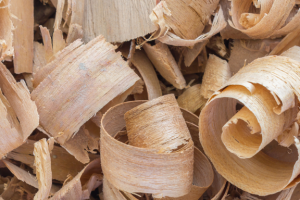At a headline level, Australia’s inflation is on the rise. Measured through the Consumer Price Index (CPI), Australian prices lifted 3.5% in 2021, right at the top of the Reserve Bank’s target band. Little wonder then that many expect the RBA to rein in this inflationary pressure by applying an interest rate rise in the near future. There is however, more than a chance the RBA will hold off until there are stronger signs of wages growth.
First, to the numbers. Like much else these last two years, the CPI and therefore inflation has been all over the place due to the pandemic’s various effects. From deflation in mid 2020 (average prices falling) to solid price growth less than two years later would be a remarkable turn around in normal times.
We can see the roller coaster in the first chart, with the annual line in blue really showing where headline prices are.

Many commentators expect – and the Bond and other finance markets have factored this in already – that an interest rate rise is more or less imminent. Writing in the Australian Financial Review (AFR), Ronald Mizen says most of the pundits expect an August rise after the June quarter data comes out. One driver is the stunningly low unemployment rate (read elsewhere in this edition about that!), but the fact is, unemployment is very low because the population is reduced and that also means there is less aggregate consumption. That could play into softer inflation going forward.
The other reason there is a view about a rate rise in the second half is – as Jennifer Hewett alludes, also in the AFR – the RBA will not want a specific interest rate rise to get in the way of the election, likely to be held in May. It’s the big end of town trying to have a bob each way in some respects. They want a rates rise and the signals from inflationary pressure, but not right now, thanks very much.
However, there is an alternative view, grounded in data and based on analysis that goes past the ‘headline’ and into the detailed analysis of the CPI.
Writing in the Guardian, Greg Jericho pulls few punches when he says the better measures of inflation show prices increasing 2.6% over 2021, right in the middle of the RBA’s target band. This is the ‘trimmed mean’ measure which removes items that are fundamentally volatile and tidies up items that could be considered ‘transitory’, or at worst ‘temporary’.
Here we can see what Jericho means about the difference between the two measures, with the Trimmed Mean significantly below the Weighted Median.

To underscore his thinking, Jericho points to a long-term reality, US inflation routinely drives global inflation, including in Australia. But, it does not always do so, and right now, as US inflation spikes to 6.7% in 2021 (see below), it can be seen Australia is not (at least not yet) following the US lead into dangerous inflation.

As Jericho asserts, for the most part, the transmission of US inflation has been driven by oil prices, and certainly Australia has experienced a dramatic lift in fuel prices over the course of the pandemic, driven by international oil prices. However, for the moment international oil prices are easing suggesting the present cycle may have peaked.
Another area where significant price rises have been experienced is housing. In this regard the RBA have made it clear interest rates are not the right policy instrument but rather noting that agencies such as its regulatory cousin APRA (the Australian Prudential Regulatory Authority) have plenty of weapons at their disposal.
Again to place the current headline increase in context it is important to note that the non-tradable items in the CPI ‘basket’ (ie those items not effected by overseas prices) have shown a decline in growth. Of the 88 sub-groups that make up the CPI only around 30% of these are growing by more than 3.0% and in total, their annualised growth fell from 3.2% in the September quarter to 2.8% in the December quarter.
So, if the CPI is rising too quickly for comfort, it is doing so because of a factor outside the exclusive control of Australia, and broader than any one product. Jericho says simply, this is the cost of supply-chain disruptions and at some point, that will recalibrate to something equivalent to normal.
That is, inflation is being driven by marginally increased demand and significantly reduced supply. A great deal of the inflationary pressure is supply blockages not excess demand. If it is demand you want to dampen with an interest rate rise, Jericho’s argument would be the data does not support that, and the RBA appears to be prepared to exercise patience.
When will interest rates rise?
We don’t know for sure, but the headline inflation rate is not the actual inflation underpinned by sustained wages growth that the RBA has said it is looking for.
That may still be a distance off.



